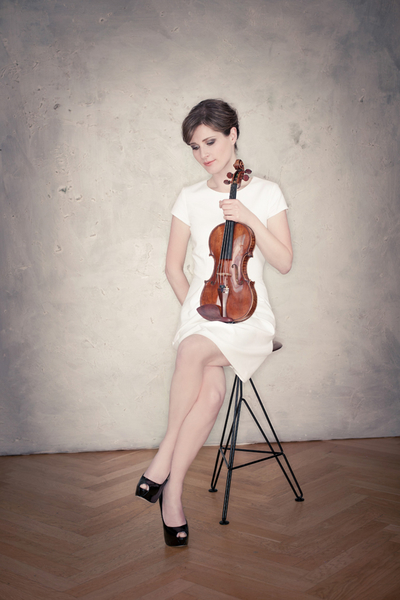Concert Hall, Sydney Opera House
February 28, 2018
This was a colourful, often boisterous program, built around one of the most lyrical of 20th-century violin concertos. The title work, Elena Kats-Chernin’s Heaven is Closed, was written in 2000; indeed, Kats-Chernin began work on it on New Year’s Eve. It is a dynamic piece, scored for a large orchestra with considerable mastery in a part-exotic, part-filmic style that occasionally recalls the movie scores of John Williams. After a vigorous opening, the music falls into four-bar rhythmic patterns, jazzily syncopated, and eventually hammers out a tango rhythm: all influences that may be found in other works of the composer. They underpin sophisticated harmonic sleights of hand and a myriad of colourful orchestral textures. Just before the end comes a passage that suggests a series of knocks on a very large door that remains closed – heaven’s door, presumably – but there is not a whiff of religiosity about this piece. The orchestra clearly relished the full textures and big moments, which included the sonic equivalent of a panoramic camera pan-out at one point. Visiting Russian Dima Slobodeniouk conducted with clarity; the work’s unfamiliarity may have been responsible for a slight imprecision of ensemble early on.
 Lisa Batiashvili. Photo © Sammy Hart
Lisa Batiashvili. Photo © Sammy Hart
The conductor certainly came into his own in the second half of the concert, which featured two of Richard Strauss’s best loved tone poems: Don Juan and Till Eulenspiegel. Although they share the same rich orchestration and melodic idiom, they are quite different. Each requires a specific approach: basically, red-blooded ardour for Don Juan and light-fingered mischief for Till. Slobodeniouk differentiated the two works ideally, while still treating both with brisk energy. (This is a young man’s music, after all.) The taxing parts for the horns in both works and solo clarinet in Till Eulenspiegel were triumphantly mastered, while the orchestral blend (particularly of strings and brass) was beautifully judged.
The true star of the evening was the young Georgian violinist Lisa Batiashvili. Prokofiev’s Second is well on the way to becoming the more popular of his two violin concertos, as it has always been in Russia. It was his final composition before he returned permanently to the Soviet Union in 1936 – a move that ten years later he probably regretted, having had his music banned by Stalin. Unluckily for Prokofiev, they both died on the same day.
The concerto is in three movements, with the central movement renowned for its lyrical opening theme played by the violin over a soft staccato accompaniment. Batashvili treated this theme expressively, pushing ahead of the tempo slightly, rather than creating the ethereal effect achieved by some other violinists. Her total commitment to the concerto was never in doubt. She projected strongly throughout, with excellent intonation, and I particularly liked the earthiness with which she dug into the lumbering triple time rhythms of the third movement. (I notice her new recording of this concerto with conductor Yannick Nézet-Séguin has just been released; it should be worth a listen.) Batiashvili savoured the many lyrical moments in music clearly designed to win over an audience (specifically, a Russian audience in 1936). It made for a highly agreeable centrepiece to a buoyant, life-affirming concert.
The Sydney Symphony Orchestra performs Heaven is Closed at the Sydney Opera House until March 2












Comments
Log in to join the conversation.